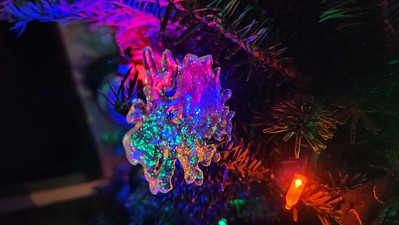
Hello,
This month is a bit of a grab bag again with an article on freshwater protection, another on koala-vehicle strikes, and two on soil carbon (both offering caution on the potential and flagging complexity).
If you know someone who wants to sign up to receive these summaries, they can do so at http://bit.ly/sciencejon (no need to email me).
FRESHWATER:
Flitcroft et al. 2023 notes that counting effective freshwater protection globally is really hard (as is getting effective protection to happen). Fig 1 has a nice summary of how restrictive different protection mechanisms are. They also call for both better management of existing protected areas (PAs) to include freshwater conservation needs, and protections for freshwater in new places. While issues around data resolution and data availability continue to pose challenges to freshwater conservation, they argue that more explicit consideration of both freshwater and terrestrial objectives in any area-based protection is a good start.
WILDLIFE-VEHICLE CONFLICTS:
Dexter et al. 2023 makes a point that seems obvious once you think about it, but which was new to me. Namely, hotspots of wildlife-vehicle collisions (they looked at koala strikes) are likely to be very dynamic over time as wildlife populations grow and shrink, as land use change drives shifts in their movement, and as roads and traffic change. They make the point that wildlife crossings are generally cited based on past collision data, and found that collision hotspots decline over time (as nearby populations decline and/or move). There was some unspecified 'road mitigation' which could have partially driven the reductions but the authors said the mitigation wasn't sufficient to explore the decline (pointing to unpublished data, unfortunately). They recommend instead taking a broader landscape approach considering habitat and trends as opposed to focusing crossings at local collision hotspots, and including crossings or other mitigation early when making infrastructure changes.
SOIL CARBON:
Ogle et al. 2023 looks at the soil carbon portion of U.S. plans to meet their contribution to the Paris agreement on climate mitigation. They review several well known challenges w/ soil carbon (C): changes are hard to predict and measure accurately, that additionality and permanence can be challenges, and that changing practices can have undesirable side-effects (increasing emissions from soil of strong GHGs like nitrous oxide or methane, shifting emissions to other farms, etc.). See Table 1 for a summary. They also provide an overview of policy options including mandates, subsidies and incentives, C taxes, and C offsets (see Table 2). They call for a suite of research to investigate these challenges and look for a path forward if one exists.
Wang et al. 2023 is a helpful review of the degree to which soil carbon sequestration can offset greenhouse gas (GHG) emissions from ruminants (mostly cattle, but also sheep, goats, and buffaloes). It's a nice example of fairly simple analysis revealing important insights. Their top level finding is that to offset ruminant emissions from manure and burping over a 100 year timeframe, we would need to roughly triple the current total global carbon stock in managed grasslands (adding 200% to existing stocks), with regional increases needed from ~25%-2000% (Fig 4b, and see 4c which is per ha). That large an increase is not feasible; while reducing net emissions on ranches is important, we shouldn't expect to get the global beef & other ruminant sector to help mitigate climate change on net. That's perhaps obvious, but fringe local cases of low-density ranches w/ lots of nature potentially being carbon negative are often cited as examples of something globally scalable, so it's a useful reminder that they are not unless we reduce the global supply of ruminants (farm and eat less of their meat and dairy). Fig 3 summarizes how cattle factor into this in a different way: depending on how a given grassland can sequester and how much methane each cow produces, the "offsettable" cattle density ranges from 0 to 1.2 (for the very best case scenario).
REFERENCES:
Dexter, C. E., Scott, J., Blacker, A. R. F., Appleby, R. G., Kerlin, D. H., & Jones, D. N. (2023). Koalas in space and time: Lessons from 20 years of vehicle‐strike trends and hot spots in South East Queensland. Austral Ecology, June 2021, 1–18. https://doi.org/10.1111/aec.13465
Flitcroft, R. L., Abell, R., Harrison, I., Arismendi, I., & Penaluna, B. E. (2023). Making global targets local for freshwater protection. Nature Sustainability. https://doi.org/10.1038/s41893-023-01193-7
Ogle, S. M., Conant, R. T., Fischer, B., Haya, B. K., Manning, D. T., McCarl, B. A., & Zelikova, T. J. (2023). Policy challenges to enhance soil carbon sinks: the dirty part of making contributions to the Paris agreement by the United States. Carbon Management, 14(1). https://doi.org/10.1080/17583004.2023.2268071
Wang, Y., de Boer, I. J. M., Persson, U. M., Ripoll-Bosch, R., Cederberg, C., Gerber, P. J., Smith, P., & van Middelaar, C. E. (2023). Risk to rely on soil carbon sequestration to offset global ruminant emissions. Nature Communications, 14(1), 7625. https://doi.org/10.1038/s41467-023-43452-3
Sincerely,
Jon
p.s. This is a photo of a handmade glass snowflake ornament reflecting and transmitting several colors of Christmas tree lights